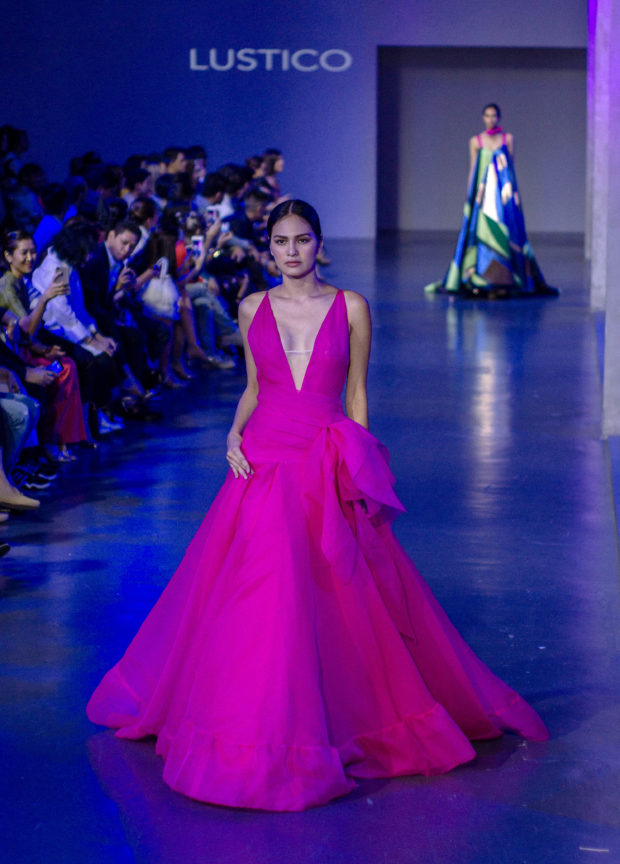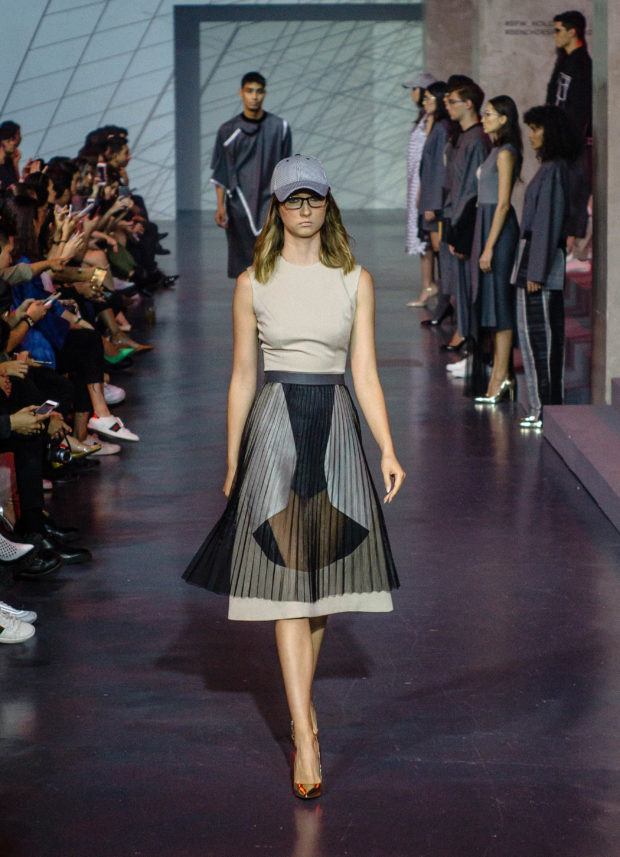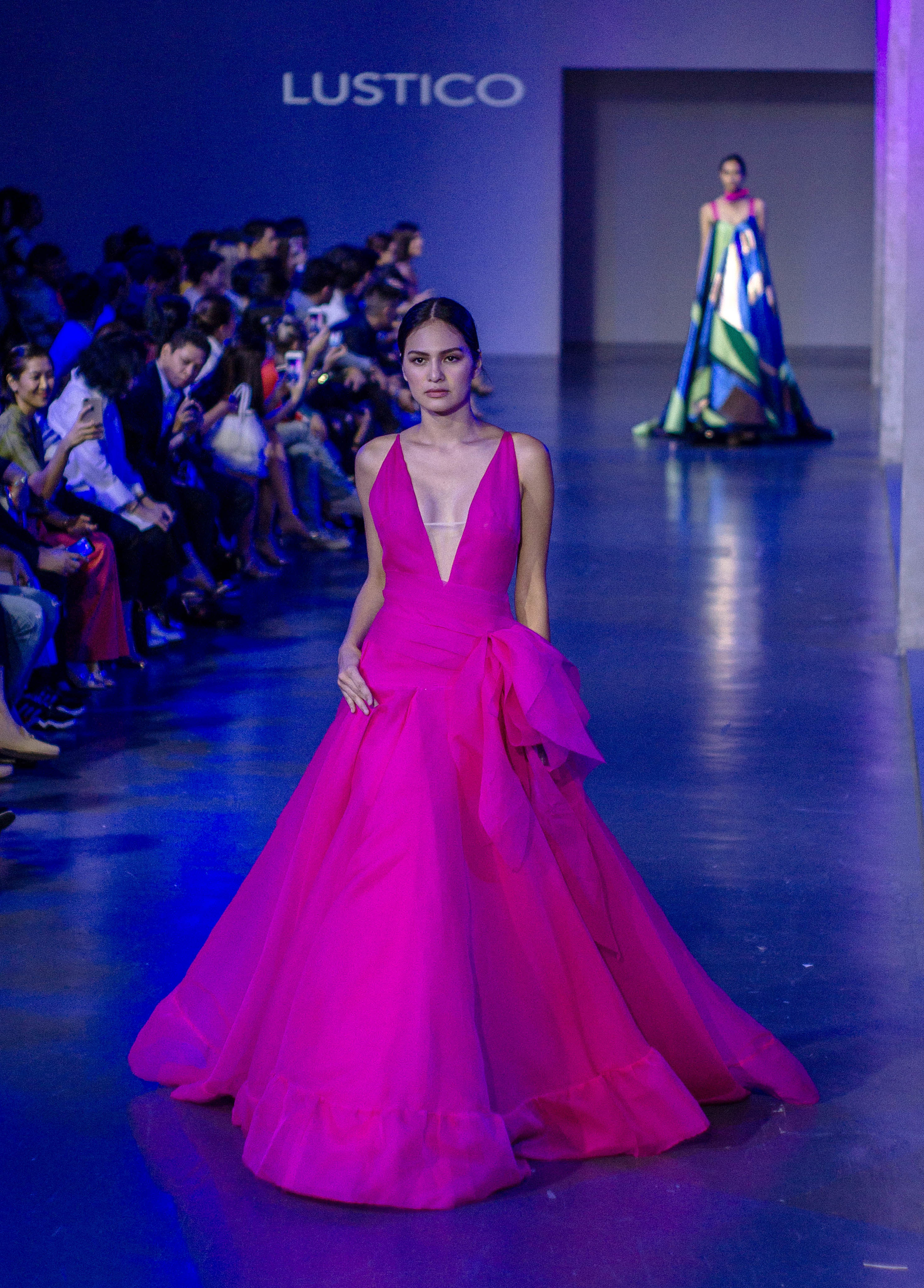
Time was when Filipino fashion designers perennially complained about the lack of fabrics, and how the absence of a local textile industry would sound the death knell for the Philippine fashion industry. Our predicament, they would say, was so unlike that of our better-off neighbors like Thailand, which had its own thriving silk industry, or Indonesia with its batik.
This issue was at least two decades ago. We still don’t have our textile industry.
But—Filipino fashion designers aren’t only still around; they are also continuously reinventing themselves, and redefining the parameters of fashion design.
Not only that, the young generation of fashion designers may not even be concerned that it is not being serviced by a textile industry. Why? Because they’re growing up knowing how to manipulate fabrics and test the limits of their artisanship. They can make clothes out of plastic, repurposed junk.
Ivarluski Aseron isn’t exactly young enough to belong to the upcoming breed of designers. He already has a secure niche in Philippine fashion, in fact.
Yet, as I watched his 25-piece collection in the Bench Fashion Week (#BFW_holiday18) last Friday, I realized that Aseron doesn’t belong either to the older batch of Filipino designers who felt disadvantaged by the lack of a textile industry. (See related story and photos on C2)
On the contrary, Aseron is ingenious and imaginative enough to go beyond traditional fabrics and to manipulate fabrics for a highly unconventional approach to design.
Like I wrote last week, what makes Aseron an important designer in this era is that he can think out of the box. His design isn’t clichéd, and isn’t limited to what sells.
He is what you can call, to use a hit term these days, a “disruptor.”
He “disrupts” our notions of silhouettes, fabrication, color choices, even gender dressing.
His Bench line mix-matches silhouettes (slim or loose), does layering to the max, presents unimaginable details, and tweaks fabrics.

Game-changers
His openers were game-changers: metallic cotton handwoven as a dress, tunic, top. Aseron’s staff wove the fabric, using handstitching, as well as cotton tapes.
His pleats were interesting details—knife pleats done by his staff, sunburst pleats by Rajo Laurel’s pleating service, book leaf details (on the skirt), counter pleating which he said was a really tedious process, the first time he did it.
His silhouettes were simple—we love designers like Aseron who aren’t there to shock or pull stunts—but interesting and wearable.
His clothes were wearable even as they exuded whimsy—asymmetric hems, for instance, one-sleeve dress, sleeves popping out of sleeves, black shorts seen through transparent crinoline.
His layering was imaginative—black transparent, pleated crinoline skirt, over white skirt cut out at the front to reveal black shorts, for instance.
What was significant about all these was that, even as he innovated on silhouettes, detailing and fabrics, Aseron never lost his sense of proportion. This was why the Aseron collection was cutting edge yet very wearable.
Dennis Lustico, on the second day of BFW, restored high fashion on the local scene—no mean feat, given how street style and fast fashion are the way to go.
Using luxe fabrics he sourced in Italy, Lustico brought back ultra-feminine, drop-dead-glam dressing, the expert construction of which we haven’t seen for some time on the local runway.
He told Lifestyle this line was inspired by the Countess Dowager (Tilda Swinton) in “The Grand Budapest Hotel.” It bore drama (huge ruffles) and tasteful flamboyance, quiet seduction, and lots of class. It had a whiff of the ’80s, but made to look current.
His collection was a master class for fashion design students or young designers, in terms of construction, fabric selection, color blocking, detailing and ornamentation (almost nil).
Aseron and Lustico prove that a designer can be a commercial success and still be good.
More important, it shows today’s millennial designers that there’s life outside the fairy tale princess ball gown.
Just as important, it shows that a retail visionary like Ben Chan can support high fashion, fast fashion and the future designers all at the same time.













































